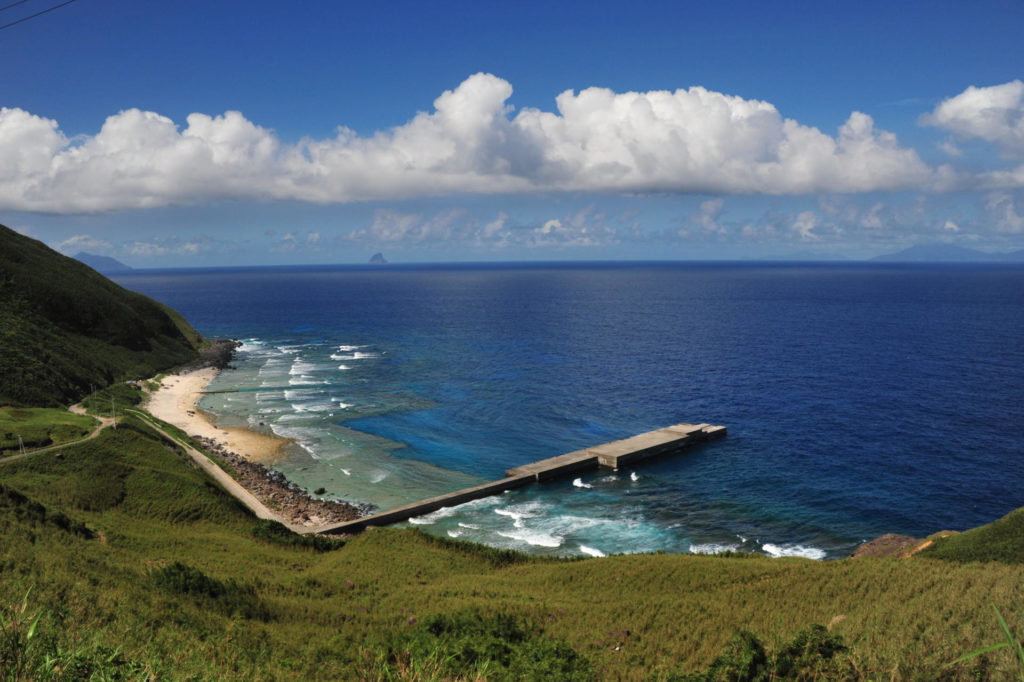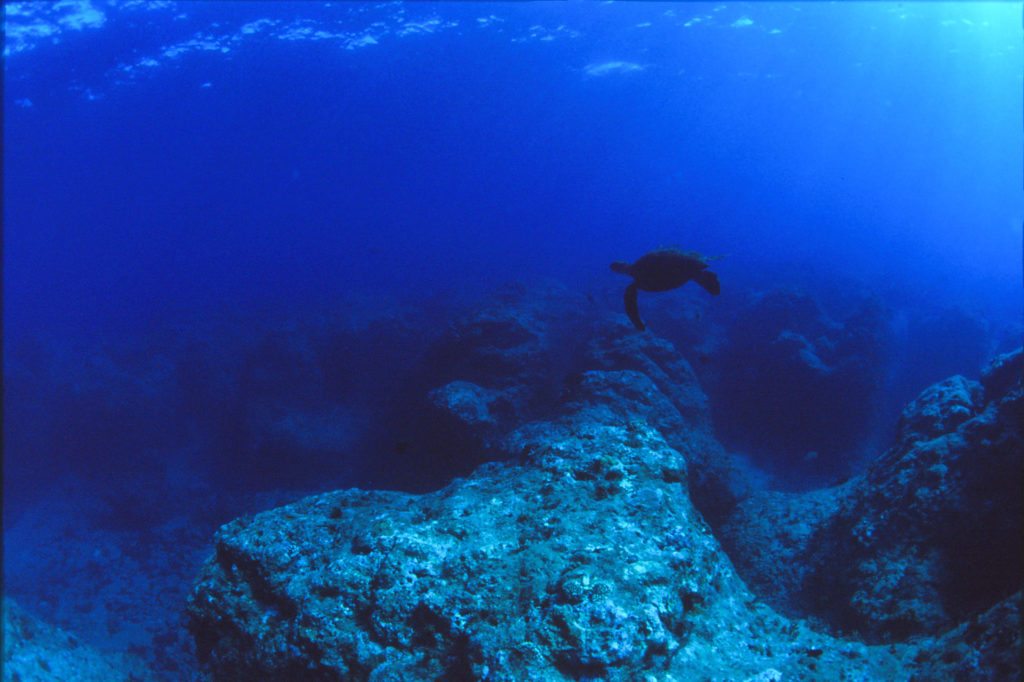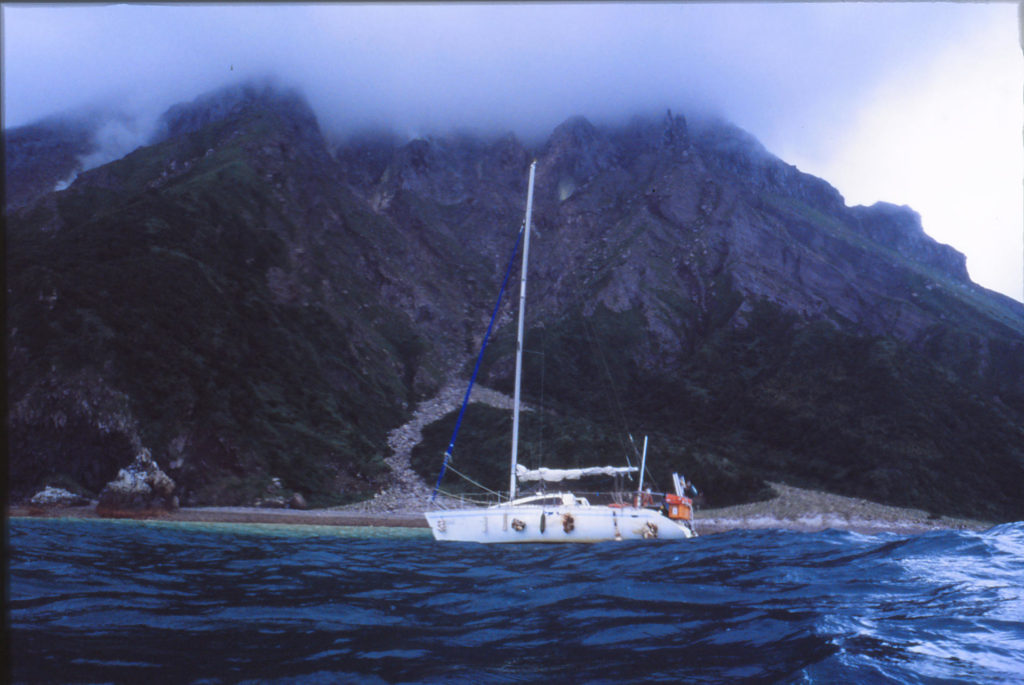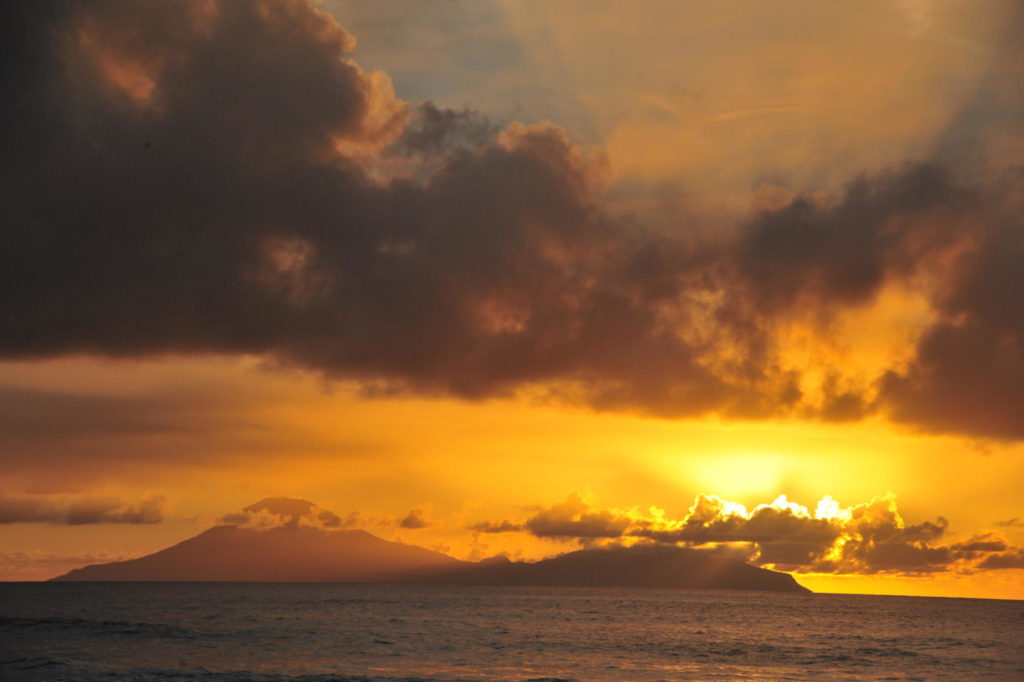The cold season was just starting, so I pulled out my worn jacket from last year. I stick my hands in the pockets and find an old airline ticket in the left pocket. The memories from that trip had me grinning, a warm feeling in my chest as I smiled. What I discovered on that trip, for me, was astounding.

A moment of discovery, no matter how small, can bring joy to your heart. I had a revelation about five years ago in the form of a sea turtle. It was not just any sea turtle, this one had an identifying number tag attached to its flipper.
Pursuing my passion for photographing waves, I had moved to Japan’s southern island of Tanegashima where I worked as a fisherman. The fishing job involved a big fixed net—big enough to fit a gymnasium inside—and every day it would take eight of us to raise the net.
We caught fish, of course, but often sea turtles would stray into the net as well. I guess there must have been at least 50 a year. Laws protect the sea turtles, so we would return them to the sea but, on one of these days, I discovered the turtle with the tag on its flipper.

“The sea turtles are born in Japan, then travel as far as Mexico,” someone at the non-profit Sea Turtle Association of Japan told me when I called the telephone number inscribed on the tag. “It will take about 30 years for the adults to return and lay their eggs.”
Sea turtles, like tortoises, are often seen as slow animals, but the loggerhead turtle crosses the Pacific where it will lay its eggs in the northern hemisphere. Two places they frequent in Japan are Yakushima and Tanegashima.
This discovery became my inspiration to make sea turtles the theme for a photography project.
I decided to chase sea turtles, and I would use the power of the wind to do it. First, I needed to find a used sailboat. I found a small, mass-produced boat from the bubble economy days that I could get for the cost of repairs.
I’m usually pretty indecisive, but this time I made a quick decision. I had very little sailing experience, but I did have a cute little boat. Her name was Moonbow 2—a rainbow in the moonlight, something you almost never see. Moonbow 1 is my tempura oil-powered camping car I wrote about back in Issue 21.
I began preparing. I’d set out in July for about one month. My destination was the area around Yakushima where there are 12 islands that have not been well researched about sea turtles.
I decided I would look for the tracks of the turtles and listen to islanders’ stories about them. I would go around the islands looking for beaches, take photos of swimming sea turtles and photograph the places where I found turtles. Then, as the hatching season reached its peak in the second half of my journey, I would look for and photograph the young turtles emerging from the sand and heading out on their journey.
July came around, and my job on the fixed nets would stop for a few months. My buddy and I were ready to set out; we cast off from the pier near home as our families waved goodbye. The rainy season hadn’t yet lifted, so we took off into the rain.
Even in my raincoat, it was kind of depressing to be out on the sea in the pouring rain. Yet, despite a sometimes weak wind and the fact the motor—our power to move in and out of harbors—was in bad shape, somehow we made it to Yakushima almost right on schedule.
A fisherman friend there explained the current between Yakushima and Tanegashima was very swift. He said,on the day of our departure, we should head out just before lunchtime when the tide was turning. But doing that would put us right into the path of northeast winds.
We were on the way to an island to the north and the predicted wind could set us back longer than we planned. Being impatient, we took off in the morning. This was a big mistake. No matter how often we tacked into the wind, we always ended up right back in the same place.

We doggedly kept doing the same thing over and over until just past noon, when we finally cleared the Yakushima Channel. It’s not a good idea to underestimate the power of nature, or ignore the advice of a local fisherman.
As we neared our goal, the island of Mageshima, it was pitch black. Twice before I had brought a fishing boat into this harbor at midday, so I had an image of what the port should look like, but all I saw was a single red light leading the way into a very small harbor.
Sailboats are a lot deeper in the water than fishing boats and, if we ran aground, it would be the end of the trip. We relied on our flashlight as we inched very slowly into the harbor, realizing just how dangerous it can be arriving during the middle of the night.
Our journey continued on to Mishima-mura—it sounds like a town, but it’s actually a series of islands north of the Tokara Islands, including Takeshima, Iojima and Kuroshima. These tiny islands have populations of 112, 142 and 215 respectively.
We spent a week in Moonbow 2 investigating the islands. At each, we would go to the local primary school, tell everyone about our sea turtle research and gather some local information. Even if we arrived unexpectedly, we were always shown into the principal’s office to talk. We would ask on which beaches the turtles were laying their eggs and how to get to them.
We had heard, on Takeshima, sea turtles come up the boat landing ramp. On Iojima, some 80 turtles previously had come ashore every year to lay their eggs but, with the expansion of the harbor, the sand beaches disappeared. Now, only about 20 turtles were coming each year to the man-made beach where sand from another island had been brought in.
At Kuroshima, I was out swimming in search of sea turtles when I had my first encounter with a small green turtle with a shell about 50 to 60 centimeters in diameter.
The biggest happening was our landing on Iojima. The word io means sulfur, so it’s not surprising the smell of sulfur hangs around the island. Looking for a sandy beach, we spotted something that looked promising through the binoculars. I paddled out with my camera on my surfboard and, as I got closer to the shore, I could see smoke bubbling up from under the ocean, making it a pea green color.
The water had a weird metallic flavor. I made it safely onshore over wave-rounded stones and walked over huge fields of pumice rock. What had looked like a sand beach from the boat was actually gravel from a landslide, not a place turtles would lay their eggs. It felt as if I had crossed the ocean into hell—it was nerve-wracking to be on this uninhabited part of the island.
Next, we headed south to the Tokara Islands. There are seven main islands: Kuchino-shima, Nakono-shima, Suwanose-shima, Taira-shima, Akuseki-shima, Kotakara-jima and Takara-jima. No more than 100 people live on any of the islands. Gaja-shima, an uninhabited member of the group, was where we did our first navigation at night.
We thought we’d be able to make it to the next island while it was still light but, after checking the distance, it wasn’t possible. We gathered our courage and set out into the dusk. This was the only time, just as the weather report had predicted, we had heavy rain right thorough the night.
My friend and I took turns at the helm, but with a very strong wind there was a lot to do on the boat. We were soaked by the rain and, while we tried taking turns napping, it was a very long night.
Just as morning came, the sky also decided to clear which, coincidentally, was the end of the rainy season, something we had been waiting for. However, the sun rays were so strong, they were burning our skin.
We arrived in Kuchino-shima in the afternoon. The next day I got in my trunks, grabbed my snorkel and camera and took off on my surfboard to look for turtles. During one excursion, I not only got in my first surf, but also was able to search for turtles. Summer was really here.
The Tokara Islands are where the Taira family fled after their defeat by Genji in the Battle of Genpei. The local language is an unusual Kagoshima dialect, with many beautiful old words still in use. The old tradition of blackening teeth is still carried out on some islands. It’s an interesting place where lots of traditions are hidden away on the south-stretching islands.
One thing we learned is, where there are sand beaches, sea turtles will lay eggs, but in too many places people have built harbors or breakwaters. The beaches have either completely disappeared or have become very narrow. It’s more convenient for people, but the places where sea turtles, an endangered species, lay their eggs, have are disappearing.
People have also started to disappear from the islands. Many primary schools have fewer than 10 students. Precious culture is being lost as the population dwindles.
We came within about five miles of the southernmost tip of the Tokara Islands where the weather was clear and the east wind about the strongest we had on the whole trip. We were enjoying some fast sailing.
Then, suddenly, everything vanished in front of us. What the…? When you encounter something you simply cannot understand, it seems as if time just stops. The mast had separated at its base, and the sail had fallen and was drifting on the surface of the ocean. Will we flip over? Is our undependable engine going to work? It was an anxious moment.
First we tried starting the motor. It fired up, but some rope or wire was wrapped around the propeller. We cleared it and got everything that had fallen into the ocean up on the deck. As the engine sputtered, it didn’t seem as if the boat would make it. We crawled back to our destination, Kotakara-jima.
We didn’t drift off course, but we knew, with just the engine, we wouldn’t be able to return to Tanegashima. “We’ll do it some way,” I thought. We set up the boom in place of the mast and attached a tiny sail to it.
I could write another story on everything that happened here, but most importantly we were on the road home, still looking for tiny sea turtles in the vastness of the Pacific, and it was right at the peak of the hatch. The fact that 71 percent of the world is covered by ocean—360 million square kilometers of space—was not lost on us as we looked for turtles with shells no more than five centimeters in diameter.
We had been looking from island to island, but the largest number of eggs is laid on Yakushima. We decided to go back to Yakushima and drift in the current in the area where most of the eggs were laid.
The turtles hatch at night, then scramble into the shorebreak and swim out and ride the currents. I thought about where they would enter the Kuroshio (Black Current). We aimed for the channel between Yakushima and Tanegashima, the place where the current was strong and a tough place to sail.
From early morning I had two cameras ready and my fins on, sitting at the very back of the boat. I had my eyes open for garbage or driftwood floating on the surface, the kind of floating material that collects where two currents come together. The shade these objects provide is an oasis for many of the animals living there. They can hide from birds and other enemies and also find things to eat. I figured that’s where young turtles could be found.
I can’t tell you how many times I found a little piece of garbage on the surface and dove in to take a look. I would swim for about 30 minutes in the area where the currents meet. As lunchtime passed, I started getting irritated. Yet, under the floating objects I did find several kinds of young fish—it was a clear and beautiful world under there.
Then time stood still. It was the same feeling when our mast broke. I saw a little black object, looking like a butterfly beating its wings, coming toward me. I can’t even remember how loud my voice was as I called out to my buddy on the boat, “I found one!”
With the tiny sail straining against the wind, the Moonbow 2 carried us back to Tanegashima, powered by the precious image of the baby turtle. It had been 31 days since we left the island on our journey.





